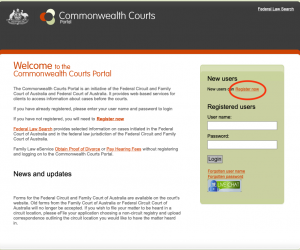When someone proceeds with a divorce without legal representation, it is often called a “DIY Divorce” or “self-representation.”
This means that the individual is handling the divorce process on their own, without the assistance of a lawyer.
If you have decided to go through with your divorce without a lawyer, there are a few steps you need to be aware of.
This article highlights how to get through a divorce without a lawyer, what action steps you must take, and the necessary forms to fill out.
What Are the Pros and Cons of Self-Representation in an Australian Divorce?
|
Pros of Self-Representation |
Cons of Self-Representation |
| Cost Savings: No need to pay legal fees. | Complexity: Australian divorce laws and procedures can be intricate, making them challenging to navigate without expertise. |
| Direct Control: Full control over your case and the ability to make decisions without waiting for a lawyer. | Potential Mistakes: Risk of making errors in paperwork or misunderstanding legal requirements, leading to delays or unfavourable outcomes. |
| Simplicity: In amicable separations where both parties agree, the process can be more straightforward without involving lawyers. | Emotional Toll: Handling your divorce can be emotionally draining, especially when dealing with a former spouse. |
| Flexibility: Ability to work on your timeline without relying on a lawyer’s schedule. | Lack of Expertise: Without legal training, one might overlook rights or be unaware of certain entitlements or obligations. |
| Transparency: Direct access to all communications, documents, and court proceedings without intermediaries. | Negotiation Difficulties: Without legal training, it can be challenging to negotiate settlements or arrangements effectively. |
| No Legal Counsel: Lacking the guidance and advice a lawyer would provide regarding best steps or strategies. |
While the table lists some of the most common pros and cons, each divorce situation is unique.
Individuals must evaluate their circumstances and consult a legal expert or even a divorce lawyer before self-representing.
How Long Does the Divorce Process Typically Take Without Legal Representation?
Without legal representation, and depending on the efficiency of handling paperwork and any potential complications, the entire process from filing after the separation to finalisation could take roughly 4 to 6 months or even a year.
However, disputes over assets or custody can extend this timeframe significantly.
What if I Have Children? Can I Still Get a Divorce Without a Lawyer?
Yes, you can divorce without a lawyer if you have children. However, custody, parenting orders, visitation, and child support may complicate divorce.
Managing these stages with a lawyer might be more accessible, mainly if conflicts exist. Legal specialists can clarify and guide all parties, including children, to the best conclusion. Be well-informed and seek guidance or consultation if you DIY.
What Happens to Property and Assets When Divorcing Without Legal Aid?
The division of property and assets in a divorce without a lawyer follows the same legal standards, but the parties must comprehend and negotiate a fair allocation.
Any overlook or mistake might cause financial differences or disagreements. While you can do this without a lawyer, reviewing legal resources, guidelines, or occasional expert guidance helps assure a fair and lawful split.
Getting started with divorce proceedings on your own
Going through a divorce can be a challenging time in a person’s life, most especially when dealing with a narcissistic partner. But it doesn’t always have to be. If your divorce is reasonably straightforward and hassle-free, divorcing without a lawyer will be easy.
So, if you’ve decided that your relationship has irretrievably broken down and there is no chance of resuming the relationship, you’ll need to start the divorce process by:
- Filing a sole application (by yourself)
- Filing a joint application (with your partner)
In the first section of the application (Part A Question 1), you will be asked to specify if you’re a sole or joint applicant. Make sure to check the correct option.
In sole applications, court attendance is not required unless there are children (under the age of 18 years) in the marriage.
For joint applications, court attendance is not required unless the applicant selects to attend in the application form (Question 2).
Before you start the process of divorce without a lawyer, it is important to be across these facts:
- To be eligible to file a divorce application, you would have had to be separated for 12 months or longer. These 12 months don’t necessarily have to be consecutive
- If you’ve been separated and living under the same roof for 12 months, you will need to provide more evidence (including affidavits)
- You need to have a marriage certificate
- If you are filing a sole application, you will need to serve a divorce to your spouse
- If you’ve been married for less than 2 years, you will need to include a counseling certificate in your application
- If there are children in the marriage, you will have to specify parenting arrangements (including living arrangements, after-school care, and financial support)
- The filing fee will cost you between $350 AUD – $1505AUD, depending on whether you’re eligible for a discounted fee
- Divorce hearings are held electronically, and if the time comes and you don’t have to dial-in details, email [Name of registry where divorce is taking place]@fcfcoa.gov.au (example: sydney@fcfcoa.gov.au) and enquire about them
- Seeking financial and parenting orders are different from a divorce
Commonwealth Courts and E-filing
The commonwealth courts portal is the best way to get a divorce without a lawyer. The portal is interactive; prompts and directions will help you file a divorce application.
The first step is to get registered. The diagram below shows you where to click to start your registration as a new user.

Once you’ve registered, click Start a new file to begin the divorce proceedings. The FCFCOA website has a 16-step guide on E-filing on the commonwealth courts portal here.
After filing a divorce application, the court might request further documentation – you will be able to do this on the Commonwealth Courts portal. The court will review the case once you’ve submitted all the required documentation.
Each case is different, and some cases take longer to finalise. However, on average most divorces are finalised within 3 months of filing them.
If you want to divorce without a lawyer, that is more than doable. What’s important is that you equip yourself with all the information you need. Here’s a short list of resources to get you started:
- How to win interim hearings
- Genuine Steps Certificate
- FCFCOA case management pathway
Considering a Divorce Without Legal Hassles?
Navigate your separation smoothly. With Justice Family Lawyers, experience a hassle-free divorce without legal complications. Ready for a simpler path? Reach out now.
Principal of Justice Family Lawyers, Hayder specialises in complex parenting and property family law matters. He is based in Sydney and holds a Bachelor of Law and Bachelor of Communications from UTS.







6 thoughts on “Divorce Without a Lawyer in Australia: Everything You Need to Know”
If i have a lawyer will i be able to save money or will it cost more money?
Hi Jenny, there are some matters that are simple and straightforward that you should be able to handle on your own. For matters that have a degree of complexity, we reccomend you hire a lawyer as the costs you apy could save/help you gain more down the line.
Hi I have been married since 1999 and separated for 4 yrs now. My husband now asked for a divorce for his happiness and approval by his mum to approve his gf into the family. We sold our property already and it was split 50/50. What are my other entitlements and rights. We have 3 children 13, 1 and 22.
Hi, your entitlements and rights following divorce will depend on various factors specific to your situation. It is advisable to consult with an experienced family lawyer to receive advice tailored to your circumstances.
My daughters divorce has come through and she and her ex are now trying to split the assets without a lawyer. How do you transfer super from one person to the other in these circumstances
Transferring superannuation between parties in a divorce requires a binding financial agreement (BFA) or a consent order that includes a superannuation splitting order. In the case of a BFA, both parties must obtain independent legal advice to ensure the agreement is valid and understand their rights. The agreement or consent order must be submitted to the trustee of the superannuation fund, who will assess it and afford procedural fairness if it complies with the fund rules and legal standards. If approved, the trustee can implement the split according to the terms specified in the agreement.